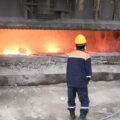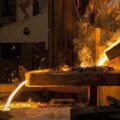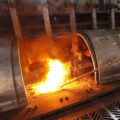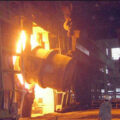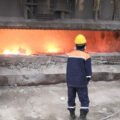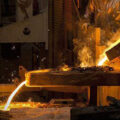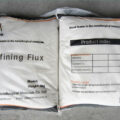In the industry, molten aluminum purification methods such as flux purification and gas purification are mainly used, and some try tube filters, ceramic foam filters, deep bed filter filtration methods for molten aluminum purification.

The flux for molten aluminum purification is composed of salts with low melting point, low density, low surface tension, high activity, and strong adsorption capacity for oxidation slag. Flux purification uses the flux added to the aluminum melt to form a large number of fine droplets, so that the oxides in the aluminum melt are wetted by these droplets, absorbed and dissolved, forming new droplets and rising to the surface, and The formed scum is removed after cooling.
Gas purification is the main primary aluminum purification method. The gas used is chlorine, nitrogen, or a mixture of chlorine and nitrogen. A mixture of chlorine and nitrogen is used to purify molten aluminum. Its function is to remove hydrogen and separate oxides on the one hand, and remove some metal impurities in aluminum (such as magnesium) on the other hand. The commonly used ingredient is 90% nitrogen + 10% chlorine. There is also 10% chlorine + 10% carbon dioxide + 80% nitrogen. This effect is better, carbon dioxide can diffuse chlorine and nitrogen well, which can shorten the operation time.
Remelted aluminum ingots or molten aluminum produced by electrolytic aluminum plants are raw materials for aluminum castings. The advantage of aluminum casting is that it can be produced into a near-net-shape product, so as to obtain maximum productivity and minimize subsequent processing.
During the charging and preparation of the holding furnace, a thick layer of aluminum slag (liquid or solid) will be formed on the surface of the molten aluminum. The aluminum slag contains a large amount of aluminum oxide, and these oxides also need to be re-melted to recover the aluminum, otherwise this part of aluminum will be lost.
After molten aluminum purification, the molten aluminum must undergo metallurgical analysis to determine that it meets the requirements of the customer before it can be cast into a product of the specified shape, and then it needs to be weighed and packaged before being sent to the customer.


